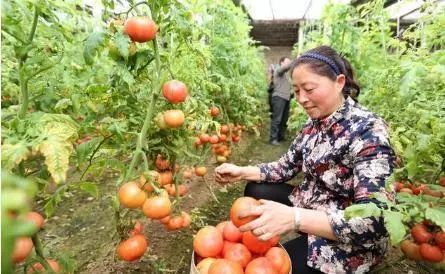We still don't know where the rice we eat every day comes from.

Rice (Oryza sativa) can be said to be one of the crops that we Chinese are most familiar with. About how to eat it, the species calendar talked about it two years ago. You can see here. What we are going to learn about today is the origin of rice.
There is no rice, there is no food. Picture: magaret_1974 / pixabay
Rice feeds the largest population in the world, but where it originated is a very complicated question. Since the beginning of the 20th century, it has been debated whether the birthplace of rice is China or India, during which there have been several dramatic reversals, and so far there is no complete conclusion. In the past hundred years, with the deepening of research methods, although the periodic conclusions have changed, the picture of the origin of rice has become more and more clear.
Full ears of rice. Picture: IRRI Images / Flickr
Before we introduce the latest developments in 2018, we might as well give you a review of the past "situation" of the war in the place of origin.
The founder of the academic circle ignited the flames of war for the first time
In the 19th century, there was a French botanist named Alphonse de Condor. In his book the Origin of cultivated plants, he believed that rice originated in India. One of the reasons is that a lot of wild rice has been found in India. At the beginning of the 20th century, Vavilov, another Soviet scholar who studied the origin of cultivated crops, also believed that rice originated in India. With the expositions of these two masters, the origin of rice in India naturally became the mainstream view in the academic circles at that time.
Swiss botanist Alphonse de Condor: the first person to ignite the war on the origin of rice. Picture: wiki commons
In 1926, Ding Ying, the founder of Chinese rice research, also discovered wild rice in China. Two years later, he wrote a practical examination of the names of cereals and put forward the view that China is the origin of rice, thus the "war" of the origin of rice began. Ding Ying stressed that there are two main groups of cultivated rice varieties, one is indica rice, which has slender grains, is not sticky after cooking, and generally likes warm, and the other is japonica rice with thick and short grains, somewhat sticky after cooking, and generally cold-tolerant rice (formerly pronounced jelly ng, but has been revised to Grain ng). Indica rice is the main cultivated rice in India, but there are a large number of varieties of indica rice and japonica rice in China. This diversity strongly indicates that the hometown of cultivated rice is in China.
Comparison of grain shape between japonica rice (left) and indica rice (right). Picture: shutterstock.com
After 1949, Ding Ying's views had a certain influence in the international community. Although some Soviet scholars began to agree with the theory of the Chinese origin of rice, the international mainstream is still skeptical. It was at this time that archaeology began to become an important means of determining the birthplace of rice.
A fight in the archaeological circle
In the 1960s and 1980s, many prehistoric rice relics were unearthed in China and India. At the same time, some ancient rice relics were also found in Thailand. For a time, the origin of rice became a "scuffle" among China, India and Thailand.
After the initial frenzy, the archaeological community gradually calmed down and seriously re-examined the reliability of the archaeological evidence. Finally, scholars found that if the same standard of evidence is used as a reference, then the rice in China is significantly earlier than that in India and Thailand. Taking the remains of intact grains that can be unquestionably identified as rice as an example, Hemudu site is the earliest in China, dating about 7,000 years ago, while India is 4000 years later. If less reliable evidence such as rice husk and phytolith (a microstructure in rice cells) is taken into account, although the history of rice cultivation in India can be extended to 4,500 years, however, some of the newly discovered relics in China after the 1980s can push the history of rice cultivation in China forward 12000 years ago!
Some of the rice grains unearthed in Hemudu site are still very complete. Picture: yongzhentang.com
In this way, until the end of the 20th century, archaeologists basically reached a consensus: Rice was first domesticated in China, and then spread to India. However, the application of molecular method, another new method to study the origin of crops, has brought the origin "war" back into a white-hot state.
New molecular biology to help.
Some molecular biologists believe that rice is not a single-origin crop. Although japonica rice originated in China, indica rice originated in India, and they were domesticated independently by the corresponding wild rice. At the beginning of the 21st century, this view once prevailed. However, scholars who advocate the single origin of rice do not show weakness. In the process of rice domestication, some characters beneficial to harvest, such as non-scattered grains, erect rice stalks, etc., were deliberately selected by the ancestors. These researchers found that the gene sequences that determine certain domestication traits are almost the same in indica and japonica, which strongly suggests that rice has been domesticated only once.
Upright and non-scattered seeds make rice a successful crop. Picture: trivedieffect.com
In 2011 and 2012, two research groups carried out larger and more rigorous DNA studies, and finally concluded that rice originated in southern China, first japonica rice, and then obtained indica genes from wild rice in the process of transmission to India before gradually transformed into indica rice. As a result, China has won a victory on this molecular battlefield for the time being.
The "war" is not completely over. A new study jointly published in the journal Nature by 72 authors from 16 institutions, including the Institute of crop Science of the Chinese Academy of Agricultural Sciences and the International Rice Research Institute, on April 25, 2018, shows that the origin of indica rice is more complex than previously thought. This time, using the updated sequencing technique, they determined the whole genome of 3024 cultivated rice samples, and then processed and compared 3010 high-quality data with computer programs. in the process, we paid special attention to the nine key gene sequences screened in the process of rice domestication.
The results are amazing: among the 1789 indica rice samples, only one sample has the same gene sequence as that of japonica rice, and at least one gene sequence of other indica rice is very different from that of japonica rice, which indicates that it is independent of japonica rice.
Faced with this result, the researchers put forward a more reasonable theory: Rice was indeed domesticated independently in China and India, respectively. China domesticated japonica rice and India domesticated indica rice. Later, Chinese japonica rice spread to India and crossed with local original indica rice for a long time, resulting in the formation of these modern indica rice varieties mixed with japonica rice genes in varying degrees. So the latest "situation" of the Battle of the Origin of Rice is that India has brought back a city again.
Of course, we must not forget that molecular biologists have been able to delve deeper into this issue because Asian rice farmers have preserved hundreds of thousands of local varieties. This huge diversity not only provides diners with a variety of choices, but also provides a large number of materials for rice breeding, but also retains a wealth of cultivation history information, and finally allows scientists to find out the mystery of the origin of rice.
All kinds of rice. Picture: gov.sg
If rice is like a banana, only a few commercial varieties are cultivated in large numbers, but many local varieties are almost extinct, then mankind will lose not only those diversified flavors and characters forever. It is a crop domestication history that fully records the wisdom of our ancestors.
The same truth does not apply to the diversity of human cultures.
This is the 226th article in the fourth year of the species Calendar, from the author of the species Calendar @ Liu.
I hear you have no distinction between grain and grain.
Poke the picture and get to know it!
Calendar Niang today's avatar
Gramineae dogtail grass
- Prev

Have you mastered the technique of growing tomatoes in the open field?
Tomatoes like temperature and light, and the most suitable temperature for photosynthesis is 20-25 degrees Celsius. Too high or too low temperature will affect its growth and development. With the progress of science and technology, people can eat tomatoes all year round.
- Next

If you plant your own succulent plants, you can make a special soil, which can easily feed the succulent plants.
After years of repeated experiments, flower friends concluded that the perfect succulent soil, these potted soil mixed formula is very suitable for planting succulent plants, used to cultivate potted succulent plants is very good, can quickly restore succulent plants.
Related
- Wuhan Hospital Iron Tree Blooming Result Was Instantly Frightened by the Gardener Master
- Which variety of camellia is the most fragrant and best? Which one do you like best?
- What is the small blue coat, the breeding methods and matters needing attention of the succulent plant
- Dormancy time and maintenance management of succulent plants during dormancy
- Minas succulent how to raise, Minas succulent plant pictures
- What are the varieties of winter succulent plants
- How to raise succulent plants in twelve rolls? let's take a look at some experience of breeding twelve rolls.
- Attention should be paid to water control for succulent plants during dormant period (winter and summer)
- Watering experience of twelve rolls of succulent plants
- Techniques for fertilizing succulent plants. An article will let you know how to fertilize succulent plants.

